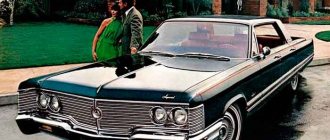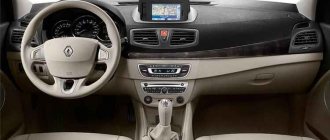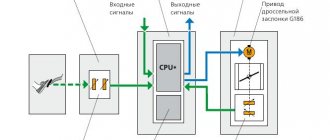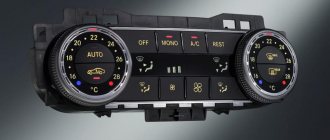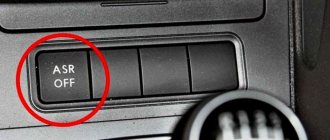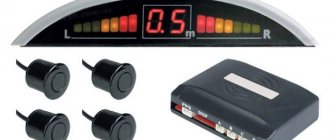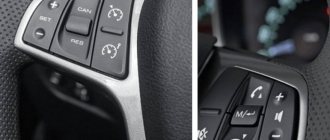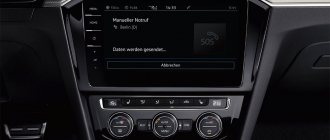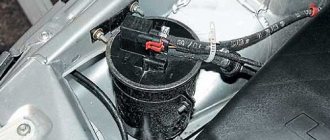26.02.2021
Conventional cruise control allows you to maintain a given speed, which allows the driver not to use the gas and brake pedals and, as a result, reduces fatigue on long trips. Adaptive cruise control is, so to speak, a new stage in the development of cruise control. It allows you to set not only the desired speed, but also the distance to the vehicle ahead. If another vehicle enters your lane, Adaptive Cruise Control will automatically apply the brakes to maintain the set distance, and once the vehicle has moved far enough away or left your lane, it will accelerate again to the speed you set. More advanced systems use a navigation system and/or cameras to help the vehicle slow down on sharp turns and stay within the posted speed limits.
Like other safety and driver assistance systems, adaptive cruise control is not perfect and has certain limitations. If the car is not equipped with a semi-autonomous driving system, you will have to steer yourself. In this case, the driver is also responsible for emergency braking and avoiding obstacles. Adaptive Cruise Control uses cameras and sensors to determine the distance to vehicles ahead, so dirty or deteriorating weather conditions will negatively affect the operation of Adaptive Cruise Control.
What's happened
First, let's highlight the features of adaptive cruise control, what it is in a car. This is an additional system whose function is to maintain the set speed and change it in the event of obstacles ahead. It helps the driver on long trips on the highway, as well as in urban conditions.
When considering what adaptive cruise control is in a car, it is worth noting that the driver can choose the speed and distance to the vehicle in front. If the radar detects a vehicle traveling ahead at a slower speed, the device commands the brakes to maintain the specified interval. As soon as the road is clear, the car returns to the original traffic approach.
Main features of ACC
If we compare the functionality of adaptive cruise control with classic cruise control, the former has significantly wider functionality. The main advantage of this system is the ability to independently control the dynamics of movement, increasing the speed to the parameters specified by the driver or reducing it in case of approaching obstacles. In fact, the name adaptive describes all the functions. It is able to adapt to real road conditions, analyze what is happening and make appropriate decisions.
How is it different from normal
Many people are interested in how adaptive cruise control differs from regular cruise control, because at first glance they have a lot in common. The new ACC system is an improved version, capable of not only maintaining a certain speed, but also maintaining a safe distance, and adapting to the current situation.
In the question of what adaptive cruise control means, it is worth noting the presence of a special sensor that measures the speed / distance to the vehicle in front. Depending on the vehicle model, the following types of devices may be used:
- Radar. The operating principle is based on emitting electromagnetic waves and receiving a return signal. Frequency adjustment determines speed, and signal return time determines distance. The received data is converted into electrical form and sent to the control unit. Radar setup and calibration may be required for accurate operation.
- Lidar. It works on the principle of infrared radiation and is similar in functioning to radar. Performs tasks using a laser. It has a more affordable price, but is sensitive to weather conditions, so it is not installed on expensive cars.
On cars with active cruise control, the sensor is placed on the front bumper / radiator grille of the car. The range of the sensor is 150 m. More modern cars use sensors that operate in a short / long range. The first ensures operation with the ability to completely slow down the car, and the second - up to 30 km/h. This feature expands the possibilities.
Recently, active cruise control with the Stop & Go function has been gaining popularity, which is useful when the vehicle stops frequently. The system stops the car if the vehicle in front does so, and then again gives the command to set the required speed.
Thus, the main difference between adaptive cruise control and conventional cruise control is the ability to independently change the speed limit, taking into account the road situation, up to a complete stop of the car, followed by starting to move and achieving the required speed.
Is it possible to install it yourself?
The procedure for installing cruise control is quite complex and will require certain skills and special equipment. It must also be said that the system is not installed on every car.
You will need equipment to reflash the engine control unit, and for this you need the help of programmers who know what cruise control is in a car. It will also require alteration of the brake system, replacement of ABS units and re-flashing of the automatic transmission.
Problems with the system may occur. It doesn't always start up and work as intended the first time. It happens that there are no errors in operation, but the system does not want to act. On some car models (in particular, VAG) it may be necessary to install a second engine control unit.
Principle of operation
To better understand, you need to know how adaptive cruise control works. Structurally, it consists of the following elements:
- Distance sensors (mentioned above). Installed in the front, must be clean.
- Additional sensors. I control the position of the car, the characteristics of its movement (uphill, straight, etc.), the position of the gearshift knob, road markings, etc.
- The ECU is the “brain” that powers the adaptive cruise control system. The device collects information that comes from different systems. It analyzes speed/distance, steering angle, lateral acceleration and other data. After this, a command is given to the fuel supply system to change the throttle angle or to the brakes.
Knowing these features, it is easy to understand the features of active cruise control and what it is in a car. The system allows you to set the speed in the range from 30 to 180 km/h, but modern systems have a wider range - from 0 to 200 km/h. The last option is relevant for systems with the Stop & Go option.
Installing adaptive cruise control at the factory makes the car more convenient to use. If there are no other cars on the road, the system maintains the set speed. As soon as the vehicle in front accelerates/slows down/changes lanes, the driving mode changes accordingly. To improve safety, modern devices are often supplemented with options for passive safety, emergency braking and GPS.
Advantages and disadvantages of ACC
Cruise control as a whole is a new and quite convenient electronic system. However, like any other automotive electronics, it has a number of disadvantages and advantages.
- Firstly, adaptive cruise control allows you to save fuel.
- The system also allows you to relieve the driver of the burden of constantly having to regulate the speed of the vehicle.
- Thirdly, the system provides a good level of security and quick response in case of an emergency.
Among the shortcomings, two groups can be distinguished:
- Purely technological. They consist of malfunctions of sensors and oxidation of contacts. If the radars malfunction, the system may by default assume that there is an obstacle ahead of the vehicle and reduce the vehicle’s speed almost to a stop.
- Mistrust on the part of drivers. Since a high level of automation relaxes drivers, the level of attention to the perception of changes while driving is consequently reduced. As a result, the motorist cannot react with the proper speed to an emergency situation.
How to use
Adaptive cruise control operation may vary depending on the vehicle model. The general principle remains the same in all cases. There are special buttons on the steering wheel or steering column lever. It is with their help that the system is controlled.
How to turn it on
To activate the device, just dial the desired speed and press the power button.
How to setup
While traveling, you can use the SET key to make adjustments. Also, depending on the model, there is a slider / rocker / paddles / buttons that allow you to change the speed up and down by 1 or 10 km/h. Pressing the Resume key allows you to return to the specified settings. Depending on the functionality, there may be a speed limit setting button and other keys.
How to turn off
If adaptive cruise control is not needed, it can be easily turned off. To do this, simply press the on/off button or the brake.
Operating principles of the ACC system
In accordance with generally accepted standards, all car manufacturers configure the operation of this assistant in such a way that it can begin its action at a speed of at least 30 km/h, and the limit value is 180-200 km/h. Activation of the service is carried out using special buttons or selectors, which, most often, are displayed on the steering wheel of the car. Switching on is done using the On/Off or Set key, and switching off occurs immediately after pressing the brake or clutch pedal. Speed limits are set for the car using the Set button, and the “+” or “-” keys allow you to increase or decrease the speed limit.
On what machines does it fit?
Today it is difficult to give a list of cars with adaptive cruise control, because it will be huge. Almost all modern manufacturers try to install such systems on their machines and even come up with their own names. The system is installed on a number of models of Mercedes-Benz, Porsche, Bentley, Toyota, Lexus, Subaru, Volkswagen, Hyundai, Infiniti and others.
You can figure out which cars have adaptive cruise control using a filter on car sales sites. Also, this point must be clarified with the dealer when purchasing a vehicle, because a lot depends on the configuration.
Which cars have ACC installed?
Automakers care about maximum comfort for the driver and passengers. Therefore, most car brands have developed their own variations of the ACC system. For example, in Mercedes cars the adaptive cruise control system is called Distronic Plus, in Toyota cars it is called Radar Cruise Control. Volkswagen, Honda and Audi use the name Adaptive Cruise Control. However, regardless of the options for naming the mechanism, the principle of its operation remains the same in all cases.
Today, the ACC system can be found not only in premium-segment cars, but also in improved equipment in mid- and budget-priced cars, such as Ford Focus, Huyndai Solaris, Renault Duster, Mazda3, Opel Astra and others.
ACC operation indication on the BMW dashboard
How to set adaptive cruise control
Many people are interested in the question of how to deliver adaptive cruise control to a car where it is not provided. This step is real, but it requires careful preparation and the purchase of many materials for the work. In particular, you may need:
- ABS pump replacement;
- brake fluid;
- acceleration/displacement sensor;
- replacing the airbag contact;
- installation of a new base for the clock spring;
- installation of a speed control module;
- radar installation;
- mounting a button on the steering wheel;
- replacing the radiator grille (not always);
- wire connectors and pins.
To install adaptive cruise control yourself, you need to remove the headlights, bumper, battery and air filter. You will also need to remove the passenger seat, glove compartment and other elements. During the work, a sensor is installed and wiring to the radar is laid. You will also need to replace the brake fluid and bleed the system.
Many questions concern how to install adaptive cruise control on an old car without modern options. In this case, difficulties may arise due to the inability to connect some elements or the risk of their incorrect operation. However, the costs may be too high.
Cost of the complex
What is cruise control in a car is now clear. This is a driver's assistant, sometimes quite effective. But these systems are not standardly installed on all car models. If the machine is not equipped with such a system, you can install it yourself or at an authorized dealer.
As for the cost of the system, it all depends on the brand of car. So, for BMW models, such a complex can cost from 100 to 150 thousand rubles. This does not take into account the price of wiring and interior monitor. You should also add the cost of installing adaptive cruise control.
Used kits can cost an average of 1,200 euros. But there is an advantage here - the kit is already as complete as possible. Although there are pitfalls. For example, there is no guarantee that this option will function as standard.
Setting up the system requires a lot of effort and special knowledge. The radar for the system costs several thousand rubles, the most expensive thing in such systems is the control unit.
As you can see, the described system is an expensive pleasure, but when buying a modern car, it would not be amiss to equip it in this way. Those who often sit in traffic jams or travel long distances will appreciate the usefulness of this equipment.
What is cruise control and a little history
Conventional cruise control has ceased to be news for half a century. It was used on the first post-war Chrysler Imperials since 1958. The invention of the device is credited to blind mechanical inventor Ralph Titor. He received a patent for the device back in 1945, and the system was called Cruise control, Controlmatic, Touchomatic, Pressomatic and Speedostat.
They say that the idea for the device came to him while riding in a car driven by a mechanic's lawyer. While talking, the driver was distracted and could not maintain a constant speed, which annoyed the inventor.
Chrysler Imperial '58, the first car with cruise control
Ralph Titor was blind from birth, but this did not stop him from becoming president of the Society of Automotive Engineers in 1936. Already at the age of 75, the inventor received several prestigious awards, doctoral degrees and could easily retire, but continued to work until the last day of his life. After Titor's death, in 1998, his name was included in the Automotive Hall of Fame.
Ralph Titor. It is to him that we owe the appearance of cruise control.
In general, the job of cruise control is to maintain a constant speed while driving. It can be turned on or off quickly by pressing the brake pedal and adjusted to a specific speed limit. All this is good, but real driving conditions can throw up any obstacle, from a passing car to a dreamy cow, imposingly crossing the road right in front of our hood. In short, you won’t relax much.
What is the difference
Intelligent cruise control is the next stage of the adaptive system, which has a more complex device and expanded functionality. Unlike active cruise control, the smart system not only controls speed, but also analyzes the car owner’s habits. In the future, it adapts to the current situation and is able to drive the car independently.
The previous version of adaptive cruise is less perfect, because it requires manual control of the main movement parameters: speed, distance. Some parameters cannot be adjusted at all, which created difficulties during the application process.
Intelligent cruise control, unlike active cruise control, works on a different principle:
- The device collects data about the characteristics of the vehicle's movement. For this, sensors, radar and front cameras are used.
- The collected information is transferred to the main computer.
- A special block analyzes the collected information, selects the necessary data and determines the manner of movement.
When analyzing the driver's behavior model, the following parameters are taken into account:
- speed reaction;
- distance to the vehicle in front;
- acceleration features, etc.
Intelligent cruise control analyzes over tens of thousands of patterns and also composes its own algorithm that adapts to the driver’s behavior. At the same time, data on the driving style of the car is periodically updated taking into account new information received and changes in driving style. If the person behind the wheel performed dangerous maneuvers and was focused on aggressive driving, these features are not taken into account.
The intelligent climate control system unit is usually placed on the right and in front of the chassis. A radar sensor is also mounted here, which detects the presence of other cars and obstacles ahead. The capabilities of such a sensor allow you to detect up to 64 objects behind the car. If the machine deviates from the specified points, the speed / direction of movement changes. In this case, the device works in conjunction with other car functions.
